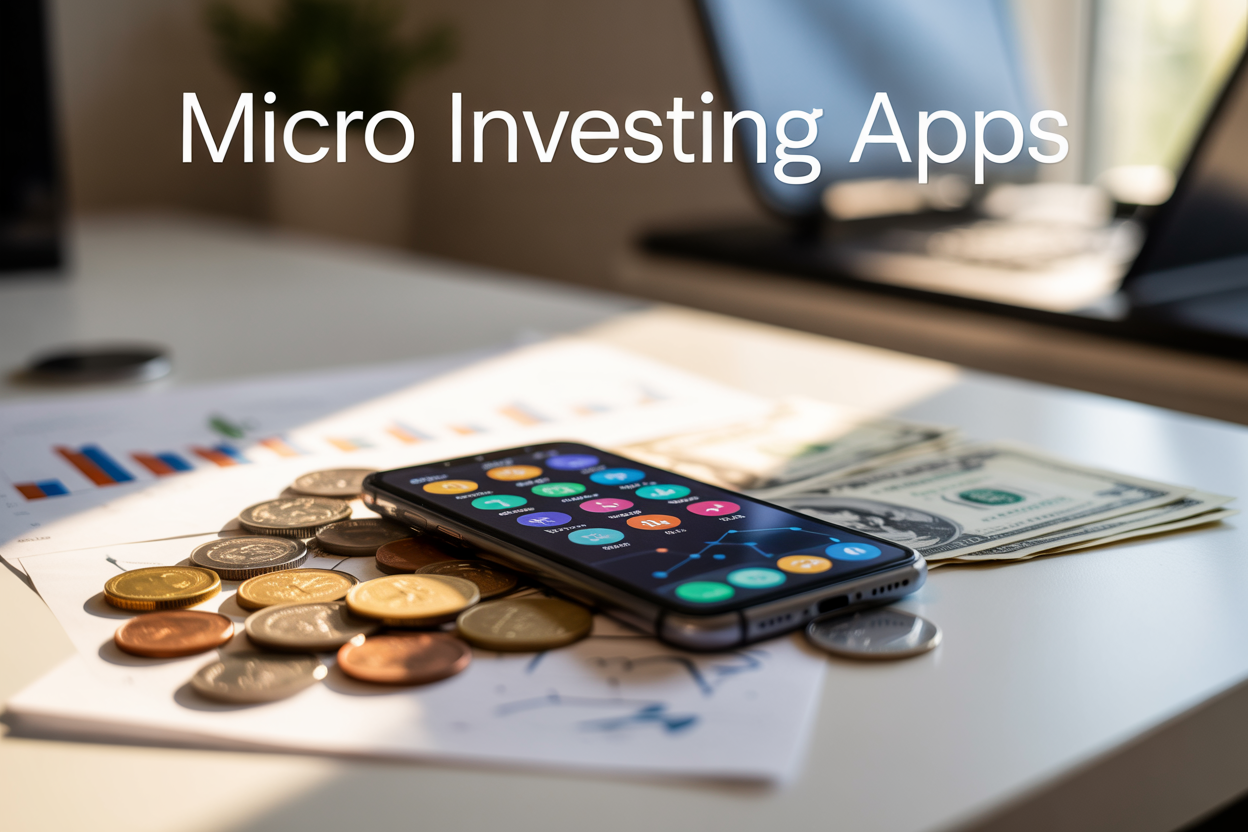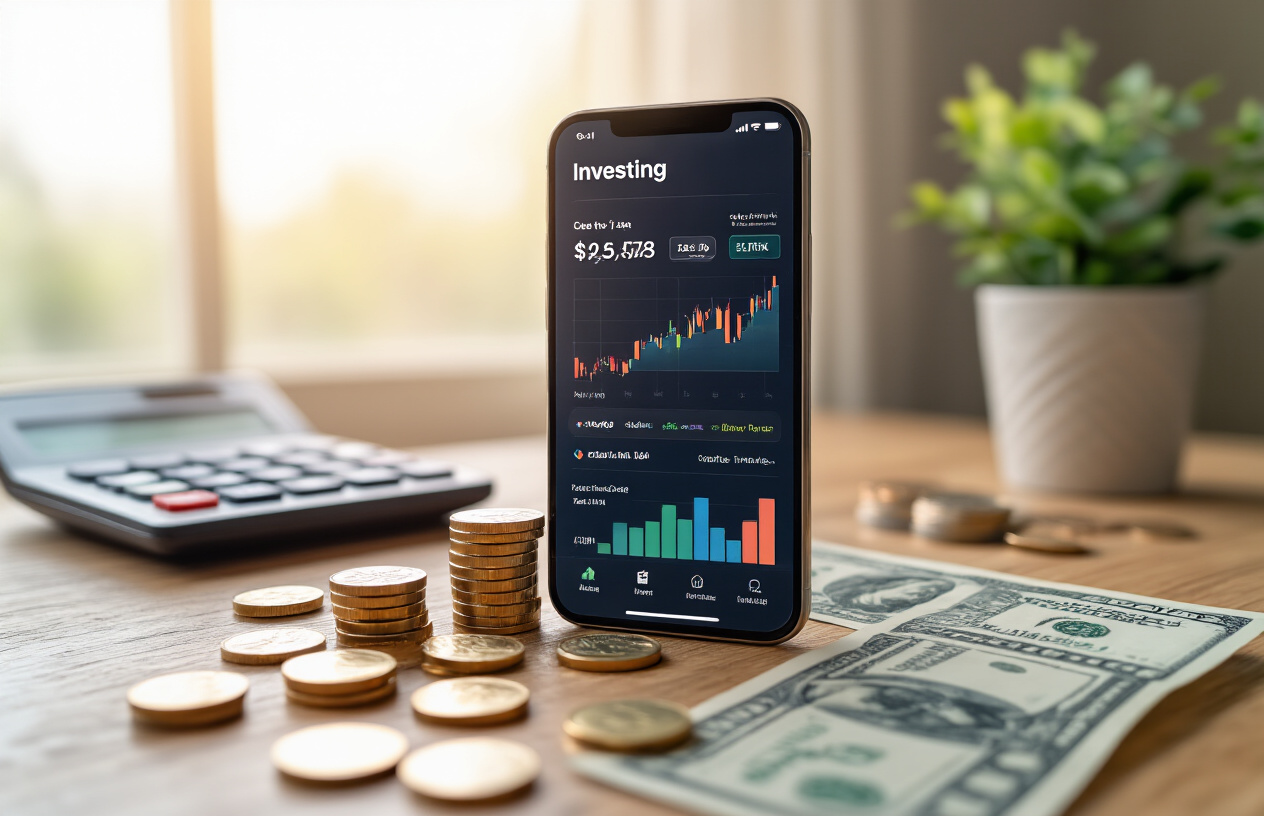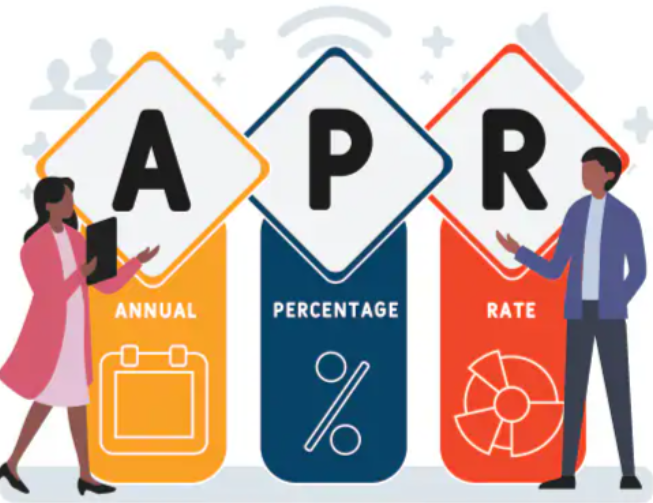Micro investing apps are financial products that offer beginners and young professionals an easy on-ramp to invest small amounts, sometimes investing spare change. These micro investing democratize investing for those who might not have tens of thousands to invest all at once. One of the most popular of these micro investing is the round-up feature, which basically rounds up your everyday purchases to the nearest dollar and then automatically invests this spare change on your behalf. Over time, those small sums could accumulate gradually into a more convenient way for users to build a portfolio without paying a huge bill.
But it’s also about more than just round-ups — in fact many micro investing provide regular, recurring tiny contributions known as micro-savings (think weekly or monthly deposits), to make investing a habit. They can also choose investment strategies according to their goals, risk tolerance and preference.. Educational resources can also be a selling point, with most micro investing designed to help beginners learn the ropes of investing, from what it means to allocate assets to how risk should play into investment decisions.
Micro investing apps are user-friendly and intuitive, providing real-time tracking of your investments with easy navigation and dashboards that offer a snapshot of how your portfolio has grown over time. For nervous savers and those without the benefit of professional investment advice, they won’t cause much sleep loss among household names like Wells Fargo or Bank of America. And by making it easier to do so, these micro investing apps help you take control of your financial future. With enough time, small contributions and the power of compounding when it comes microinvestmnents
This guide covers the best micro investing apps available today and breaks down what makes each platform special. We’ll compare costs and fees so you know exactly what you’ll pay, then walk you through the key features that can help maximize your returns. You’ll also get a simple step-by-step process to start your micro investing journey, even if you’ve never invested before.
How to Choose a Micro Investing App That’s Worth Your Money
Best investing apps with low minimum investment
The beauty of micro investing lies in breaking down the biggest barrier to wealth building: high entry costs. Traditional investment accounts often demand hundreds or thousands of dollars just to get started, leaving many people on the sidelines. The best micro investing apps flip this script entirely, allowing you to begin your investment journey with pocket change.
Many top-tier platforms let you start with just $1, while others automatically invest your spare change from everyday purchases. This means buying a $4.50 coffee could automatically round up to $5, investing that extra 50 cents for you. Over time, these small amounts add up significantly without you even noticing the difference in your daily spending.
The psychological impact of low minimums can’t be overstated. When starting feels effortless, you’re more likely to actually begin. Instead of waiting months to save up a “proper” investment amount, you can start building wealth immediately with whatever you have available right now.
User-friendly interface designed for investing beginners
Great micro investing apps understand that their users aren’t necessarily Wall Street veterans. They design their platforms with simplicity as the top priority, making complex investment concepts accessible to everyone. The best apps feature clean, intuitive dashboards that show your progress at a glance without overwhelming you with unnecessary financial jargon.
Navigation should feel natural, with important features like account balances, recent transactions, and portfolio performance prominently displayed. Educational resources are seamlessly integrated into the experience, offering bite-sized lessons that help you learn as you go. Many platforms include goal-setting tools that visualize your progress, making abstract financial concepts feel concrete and achievable.
The onboarding process typically takes just minutes, asking simple questions about your financial goals and risk tolerance. Instead of lengthy paperwork and complex account setups, you can link your bank account and start investing within the same session you downloaded the app.
Automated features that grow your wealth without effort
Automation transforms micro investing from a daily task into a background process that works while you sleep. The most valuable apps offer multiple automation options that require zero ongoing effort from you. Round-up investing automatically captures spare change from your purchases, creating a steady stream of investments from money you were already spending.
Recurring investments let you set up automatic transfers on whatever schedule works for your budget – weekly, bi-weekly, or monthly. Smart apps can even analyze your spending patterns and cash flow to suggest optimal investment amounts and timing. Some platforms use artificial intelligence to increase your investments when you have extra money available and pause them when your account balance is low.
Portfolio rebalancing happens automatically behind the scenes, ensuring your investment mix stays aligned with your goals as market conditions change. This removes the guesswork and emotional decision-making that often derails individual investors, keeping your strategy on track regardless of market volatility.
Transparent fee structures that protect your returns
Hidden fees can silently erode your investment returns over time, making fee transparency absolutely crucial when choosing a micro investing app. The best platforms clearly display all costs upfront, typically charging flat monthly fees rather than complex percentage-based structures that become more expensive as your account grows.
Monthly fees usually range from free to $3, making them predictable and budget-friendly. This structure works particularly well for smaller accounts, where percentage-based fees would be proportionally much higher. Some apps offer fee-free tiers for students or accounts under certain balance thresholds, making them accessible to virtually anyone.
Quality apps provide detailed breakdowns of where your money goes, showing management fees, trading costs, and any third-party expenses separately. They avoid surprise charges and clearly explain any circumstances that might trigger additional fees. The most trustworthy platforms often offer fee calculators that show exactly how much you’ll pay based on your specific usage patterns and account balance.
Top-Rated Micro Investing Platforms for Smart Money Growth
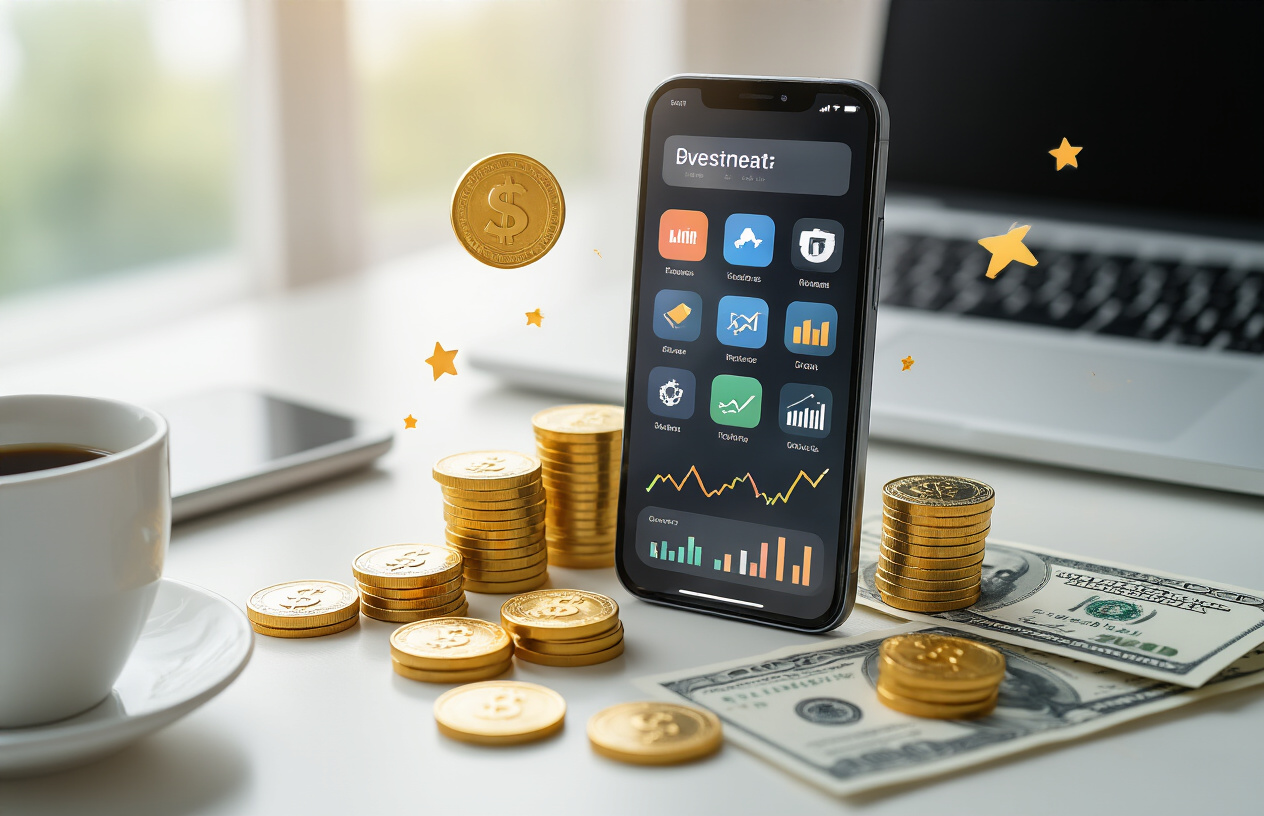
Acorns: Round-up investing that builds wealth from spare change
Acorns revolutionized micro investing by turning everyday purchases into investment opportunities through its signature round-up feature. Every time you buy coffee, groceries, or gas, Acorns rounds up your purchase to the nearest dollar and invests that spare change automatically. This seamless approach means you’re investing without even thinking about it.
The platform offers five diversified portfolio options ranging from conservative to aggressive, each built with low-cost ETFs recommended by Nobel Prize-winning economist Dr. Harry Markowitz. Your investments are automatically rebalanced to maintain optimal allocation based on your risk tolerance.
Beyond round-ups, Acorns provides recurring investment options and bonus investments when you shop with partner brands like Nike, Apple, and Target. The educational content helps beginners understand investing basics while the “Found Money” feature adds extra cash to your portfolio through cashback rewards.
Acorns charges a flat monthly fee starting at $3 for the basic plan, making it accessible for small account balances. The mobile-first design ensures you can monitor your growing portfolio anywhere, and the retirement account option helps younger investors start building long-term wealth early.
Stash: Educational approach with fractional stock purchases
Stash combines micro investing with comprehensive financial education, making it perfect for beginners who want to learn while they invest. The platform allows you to buy fractional shares of individual stocks and ETFs with as little as $5, giving you access to expensive stocks like Amazon or Google without needing hundreds of dollars.
The educational component sets Stash apart from competitors. Each investment option comes with detailed explanations about the company, industry trends, and risk factors. The “Stash 101” articles cover everything from basic investing principles to advanced portfolio strategies, helping you make informed decisions rather than blindly following recommendations.
Stash’s thematic investing approach lets you invest in causes you care about, whether that’s clean energy, technology innovation, or social responsibility. These themed portfolios make investing more engaging and personal while still maintaining diversification.
The Smart Portfolio feature provides automated investing similar to robo-advisors, rebalancing your holdings and optimizing tax efficiency. Banking services include a checking account with no minimum balance and a debit card that offers stock rewards instead of traditional cashback.
Monthly fees start at $3 for personal plans, with higher tiers offering additional features like retirement accounts and more advanced portfolio tools.
Robinhood: Commission-free trading with micro investing options
Robinhood disrupted the investment industry by eliminating trading commissions, making it possible to invest small amounts without fees eating into returns. The platform’s clean, intuitive interface appeals to younger investors who prefer mobile-first experiences over traditional brokerage platforms.
Fractional share investing allows you to purchase pieces of expensive stocks with as little as $1, democratizing access to high-priced companies. You can build a diversified portfolio across stocks, ETFs, options, and even cryptocurrency without worrying about minimum investment requirements or transaction fees.
The cash management feature offers a competitive interest rate on uninvested funds, and the premium Robinhood Gold subscription provides margin trading, larger instant deposits, and professional research reports for $5 monthly.
Robinhood’s social features let you see what stocks are trending among other users, though this can sometimes lead to herd mentality investing. The platform provides basic charting tools and market data but lacks the educational resources found in other micro investing apps.
Recent improvements include recurring investments for dollar-cost averaging and enhanced security features following past technical issues. The platform works best for hands-on investors who want control over individual stock selections.
M1 Finance: Automated portfolio management for hands-off investors
M1 Finance bridges the gap between DIY investing and robo-advisors by letting you create custom portfolios that rebalance automatically. You design your ideal asset allocation using “pies” – visual representations of how you want your money distributed across different investments.
The platform’s automation handles all the heavy lifting. Your contributions are automatically invested according to your target allocation, and the system continuously rebalances by directing new money toward underweighted positions. This dynamic rebalancing ensures your portfolio stays aligned with your goals without constant monitoring.
Expert-created portfolios provide ready-made options for different investment strategies, from aggressive growth to conservative income generation. You can also copy portfolios shared by other successful investors or financial institutions, making it easy to implement sophisticated strategies regardless of your experience level.
M1 Finance offers both taxable investment accounts and retirement accounts with no management fees, account minimums, or trading commissions. The M1 Plus subscription adds features like a high-yield checking account, lower-rate borrowing against your portfolio, and enhanced customer support.
The quarterly rebalancing schedule and automated investing make M1 ideal for long-term investors who want to set their strategy and let compound growth work over time.
SoFi Invest: Comprehensive financial tools beyond micro investing
SoFi Invest stands out by offering a complete financial ecosystem rather than just investment services. The platform provides both automated investing through pre-built portfolios and active investing with individual stocks and ETFs, all without management fees or account minimums.
The automated investing option uses sophisticated algorithms to create and maintain diversified portfolios based on your goals and risk tolerance. You can also invest in individual stocks and ETFs commission-free, with fractional share capabilities for expensive securities.
SoFi’s educational resources include live events, webinars, and one-on-one financial planning sessions with certified advisors. This human touch distinguishes SoFi from purely digital platforms and provides valuable guidance for complex financial decisions.
Beyond investing, SoFi offers student loan refinancing, personal loans, mortgages, insurance, and banking services. This integration allows you to manage your entire financial life through one platform, with benefits like rate discounts when you use multiple SoFi products.
The SoFi member community provides networking opportunities and exclusive perks like career coaching and member events. While the investment platform itself is straightforward, the broader SoFi ecosystem makes it valuable for people seeking comprehensive financial services alongside their micro investing strategy.
Key Features That Maximize Your Micro Investment Returns
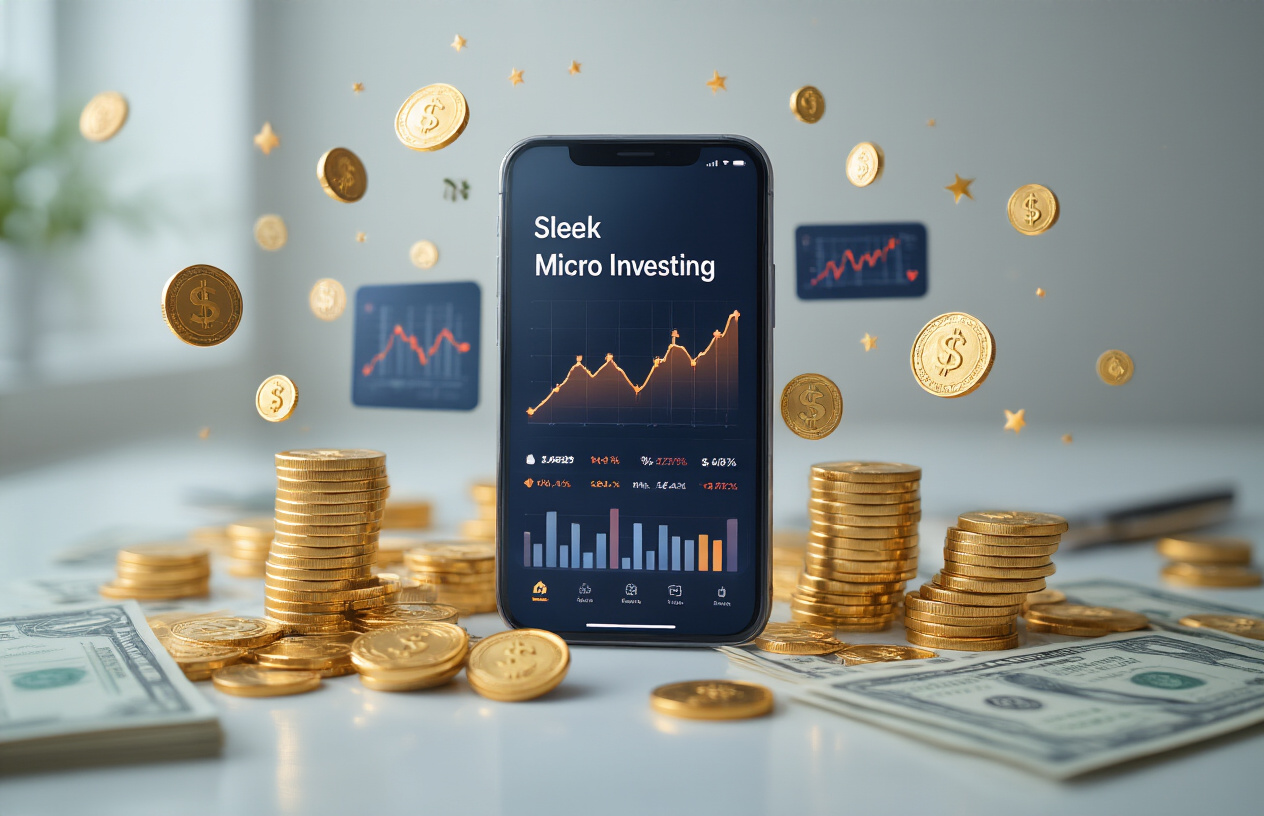
Automatic round-up functionality for effortless saving
Round-up features turn your daily purchases into investment opportunities without requiring any mental effort. Every time you buy coffee, groceries, or gas, these apps automatically round your purchase up to the nearest dollar and invest the spare change. Buy a $4.35 latte, and 65 cents goes straight into your investment account.
The beauty of this system lies in its invisibility. Most people don’t notice the small amounts being invested because they feel like natural parts of their spending habits. Over time, these tiny contributions add up significantly. Someone who spends $500 monthly on rounded transactions typically invests an extra $15-25 per month without feeling any financial strain.
Modern round-up systems offer customization options that maximize your investment potential. You can set multipliers to round up by 2x, 5x, or even 10x the spare change amount. Some apps also allow you to round up credit card purchases, debit transactions, and even recurring subscriptions, creating multiple streams of automatic investment.
Smart round-up features include spending category filters, letting you choose which types of purchases trigger investments. You might want to invest spare change from dining out but skip grocery purchases. This level of control helps align your automatic investing with your personal financial goals and spending patterns.
Diversified portfolio options that reduce investment risk
Top micro investing platforms offer professionally managed portfolios that spread your money across hundreds or thousands of different investments. Instead of putting all your spare change into a single stock that could lose value, diversification protects your money by spreading risk across different asset classes, geographic regions, and market sectors.
Most apps provide risk-based portfolio options ranging from conservative to aggressive. Conservative portfolios might contain 70% bonds and 30% stocks, perfect for beginners who want steady, predictable growth. Aggressive portfolios flip this ratio, offering higher potential returns with increased volatility for investors comfortable with market swings.
Exchange-traded funds (ETFs) form the backbone of most micro investing portfolios. These funds contain dozens or hundreds of individual stocks and bonds, providing instant diversification even with small investment amounts. A single $5 investment might give you tiny ownership stakes in companies like Apple, Microsoft, and Tesla, plus exposure to international markets and emerging industries.
Some platforms offer thematic investing options that align with your interests while maintaining diversification. Environmental portfolios focus on clean energy and sustainable companies. Technology portfolios concentrate on innovation-driven businesses. These specialized options let you invest according to your values without sacrificing the risk protection that comes from owning multiple investments.
Educational resources that improve your financial literacy
Quality micro investing apps function as learning platforms that transform novice investors into informed decision-makers. Interactive tutorials break down complex investing concepts into digestible lessons you can complete during coffee breaks. These resources cover everything from basic terminology to advanced portfolio strategies, growing your knowledge alongside your investment balance.
Many apps provide real-time market insights and analysis that explain why your investments are gaining or losing value. Instead of watching mysterious numbers change, you learn about market trends, economic factors, and company performance that drive investment results. This ongoing education helps you make better financial decisions beyond just the app.
Personalized learning paths adapt to your knowledge level and investment goals. Beginning investors might start with lessons about compound interest and risk tolerance, while more experienced users access advanced topics like asset allocation and rebalancing strategies. Progress tracking keeps you motivated to continue learning and improving your financial skills.
Community features connect you with other investors who share experiences and insights. Discussion forums, Q&A sections, and expert webinars create supportive environments where you can ask questions and learn from others’ successes and mistakes. This social aspect of learning accelerates your financial education and helps you avoid common investing pitfalls.
Cost Comparison: Finding the Most Affordable Micro Investing Solution

Monthly subscription fees versus percentage-based charges
When picking a micro investing app, you’ll run into two main pricing models that can dramatically impact your long-term returns. Some apps charge flat monthly fees ranging from $1 to $5, while others take a percentage of your assets under management, typically between 0.25% to 1% annually.
Flat monthly fees work best for larger balances. If you’re consistently investing $200+ per month, a $3 monthly fee equals just 1.5% of your contributions. However, if you’re only investing $20 monthly, that same fee becomes a hefty 15% charge on your new investments.
Percentage-based fees scale with your account size, making them ideal for smaller investors starting out. A 0.5% annual fee on a $100 account costs just 50 cents yearly. But as your balance grows to $10,000, you’re paying $50 annually – significantly more than most monthly fee structures.
Some apps like Acorns charge both ways: a monthly fee plus additional percentage-based charges for premium features. Always calculate the total cost based on your expected investment timeline and amounts.
Hidden costs that can erode your investment gains
Beyond headline fees, micro investing apps often include sneaky charges that quietly drain your returns. Transfer fees for moving money out can range from $5 to $25 per transaction – a massive hit if you’re only withdrawing small amounts.
Many apps use spread markups on stock purchases, adding 0.1% to 0.3% to each trade without clearly disclosing this cost. Over hundreds of micro transactions, these markups add up quickly.
Watch for dormancy fees if your account stays inactive, foreign transaction fees for international investments, and paper statement charges. Some apps also charge for basic features like automatic rebalancing or tax-loss harvesting that competitors offer free.
Card decline fees hit when your linked account lacks sufficient funds for a round-up investment. At $1-3 per decline, active users can rack up surprising charges.
Free trial periods and promotional offers for new users
Most micro investing platforms sweethen the deal with introductory offers to hook new users. Acorns frequently offers 30-90 day free trials, while Stash provides up to 6 months free for new subscribers.
Qapital runs periodic promotions waiving fees for the first year, and Digit offers extended trial periods during marketing campaigns. Some apps provide cash bonuses ranging from $5 to $100 for meeting initial deposit requirements.
Set calendar reminders before trial periods end, as apps automatically charge your payment method. Many users forget and end up paying monthly fees they didn’t expect.
Take advantage of these offers to test multiple platforms simultaneously. You can compare user interfaces, investment options, and fee structures without financial commitment.
Break-even analysis for different investment amounts
Your investment amount determines which fee structure saves you money. Here’s how different scenarios play out:
| Monthly Investment | $1 Monthly Fee | $3 Monthly Fee | 0.25% Annual Fee | 0.75% Annual Fee |
|---|---|---|---|---|
| $25 | $12/year (48%) | $36/year (144%) | $0.75/year (3%) | $2.25/year (9%) |
| $100 | $12/year (12%) | $36/year (36%) | $3/year (3%) | $9/year (9%) |
| $500 | $12/year (2.4%) | $36/year (7.2%) | $15/year (3%) | $45/year (9%) |
For investments under $100 monthly, percentage-based fees typically win. Above $400 monthly, flat fees become more economical.
Calculate your personal break-even point by dividing the annual flat fee by your expected percentage fee rate. If you invest more than this amount annually, choose the flat fee option.
Getting Started: Your Step-by-Step Guide to Micro Investing Success

Account Setup Process and Required Documentation
Opening a micro investing account takes just minutes when you have the right documents ready. Most apps require basic personal information including your full name, date of birth, Social Security number, and current address. You’ll also need a valid government-issued ID like a driver’s license or passport for identity verification.
The process typically involves downloading the app, creating a secure password, and completing identity verification through document scanning. Many platforms use automated systems that instantly verify your ID by taking photos of your documents. Some apps may request additional information like employment details or estimated annual income to comply with financial regulations.
Most micro investing platforms are SIPC-insured, protecting your investments up to $500,000. During setup, you’ll choose between individual taxable accounts or tax-advantaged options like Roth IRAs. Individual accounts offer more flexibility for withdrawals, while retirement accounts provide tax benefits for long-term growth.
Linking Bank Accounts and Setting Investment Goals
Connecting your bank account enables automatic investing and withdrawals. You’ll need your bank’s routing number and account number, which you can find on checks or through online banking. Most apps use bank-level encryption and require micro-deposits for verification – small amounts deposited and withdrawn to confirm account ownership.
Round-up investing is a popular feature that automatically invests spare change from purchases. When you buy coffee for $4.35, the app rounds up to $5.00 and invests the 65 cents difference. You can also set up recurring investments, depositing fixed amounts weekly or monthly.
Goal setting helps maintain focus and motivation. Whether saving for an emergency fund, vacation, or down payment, specific targets create accountability. Many apps offer goal-based portfolios that automatically adjust based on your timeline and risk preferences.
Choosing the Right Investment Strategy for Your Risk Tolerance
Your investment strategy should match both your comfort level with market fluctuations and your time horizon. Conservative investors often prefer target-date funds or bond-heavy portfolios that prioritize capital preservation over growth. These options typically experience smaller ups and downs but may generate lower long-term returns.
Moderate investors might choose balanced portfolios with 60% stocks and 40% bonds. This mix provides growth potential while cushioning against major market swings. Aggressive investors comfortable with volatility often select stock-heavy portfolios that can deliver higher returns over extended periods.
Most micro investing apps offer questionnaires that assess your risk tolerance based on age, financial situation, and investment experience. These tools recommend appropriate portfolio allocations, but you can typically adjust them based on personal preferences. Consider starting conservatively and gradually increasing risk as you gain experience and comfort with market movements.
Remember that risk tolerance isn’t just about potential losses – it’s about your ability to stick with your investment plan during market turbulence. Choose a strategy you can maintain consistently, even when markets become volatile.

The micro investing landscape offers plenty of solid options, but the best app for you depends on your specific goals and investing style. Apps like Acorns excel at automated round-ups, while platforms like Stash shine with their educational resources and fractional shares. M1 Finance stands out for its sophisticated portfolio management tools, and Robinhood appeals to those wanting zero fees and easy trading access.
Don’t get caught up in flashy features or marketing hype. Focus on what really matters: low fees, user-friendly design, solid investment options, and tools that match how you want to invest. Start small with one app that feels right, test it out for a few months, and remember that consistency beats perfection. Your spare change today can grow into real wealth tomorrow, so pick an app and start building your financial future one micro investment at a time.
